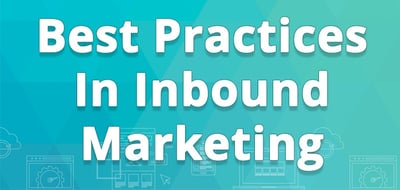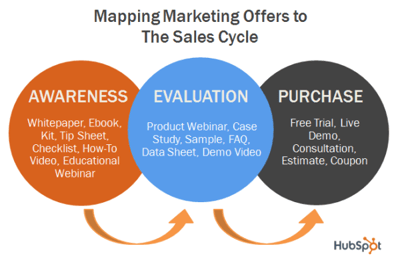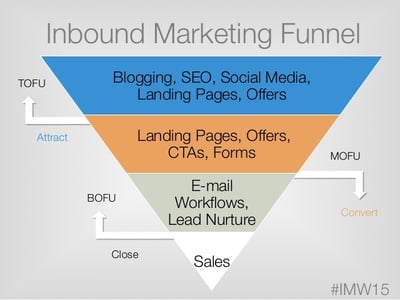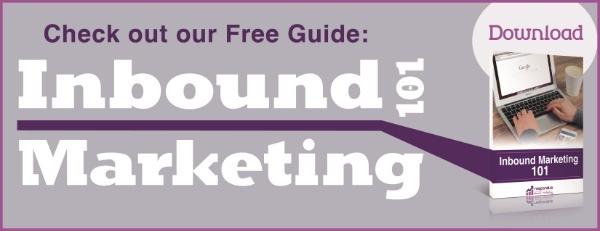The driving forces of inbound marketing are at work, changing the way marketers approach lead generation, customer retention, and revenue growth for B2B, B2C, and nonprofits alike. Modern marketing strategies are all about getting your creative juices flowing, producing robust and relevant content designed to build great relationships and close leads. While it's an effective and profitable method that brings meaningful results overtime, inbound marketing successes don't come without a little elbow grease. 
Behind every well executed campaign is a rigorous process involving (A/B) testing strategies, benchmarking, and continuous monitoring of performance and improvement to produce desired results. Every detail counts. From your outreach and messaging, to providing a seamless user experience and implementing personalization tactics, your meticulous marketing efforts should affix you with 79% of marketers who see an increase in profits within a year.
[DOWNLOAD]

The prospect of getting found by customers online and building relationships without relying on a sales team takes expertise, which is why inbound marketing best practices needs to be placed in the right hands. As a B2B inbound marketing agency who's marketed for a variety of businesses in different industries, we can honestly vouch for these effective inbound marketing integration tactics.
Top 5 Inbound Marketing Best Practices That Yield Results
- Create A Customized Experience
"Creating content for everyone resonates with no one" - wise words spoken by Marcus Stoll, Head of Marketing at NewsCred. Strategy in the digital age is more about providing a customized service. To tailor an experience around an individual, gain a true sense of who your audience is - their preferences, goals, and challenges. Identify your buyer persona's behavioral trends; this could be based on their purchasing habits, lifestyle, or online research practices. In analyzing and segmenting your data, your marketing strategies will help you to find your best customers (and vice versa).
“Creating content for everyone resonates with no one.”- Marcus Stoll at NewsCred via @RspnsvInbndMktg. Click To Tweet
- Sprinkling The Right Offers On The Right Pages
There's nothing like producing well-thought out pages that result in tremendous lead generation and drive an average site-wide conversion rate of 5.8% (Optimal Digital Marketing). Your pages need to deliver an experience for every persona and every stage of the sales cycle - awareness, evaluation, and purchase. Carefully map out offers accordingly to each persona and stage, then align them with the proper landing pages.

- Always Stay Top Of Mind
Once your leads express initial interest in your company, keep the ball rolling. Chances are they won't think of you unless you stay in touch. Carry out routine check-ins with your leads and customers by sending them frequent email communications such as:
- Industry news and trends
- Tips and tricks
- Monthly newsletters
- Email campaigns
- Product offers and updates
- Quality Content Marketing
An integral part of the inbound marketing methodology is content marketing, focusing on quality over quantity. The goal is to add value for your target audience by publishing educational and helpful content that addresses their pain points and needs. Depending which stage of the sales funnel your prospective customers are in - top, middle, or bottom - apply the appropriate strategies to best attract, convert, close, and delight them.
 Credit: HubSpot
Credit: HubSpot
Speaking of strategy, is this your biggest challenge? You're not alone. According to a study conducted by NetProspex, 46% of B2B marketers struggle with their inbound marketing strategies, while 42% fail to consistently and effectively create content.
Building a strong inbound marketing strategy in 24 hours starts with a goal followed by a plan of action. So, if your goal is to boost organic traffic to your website, for example, design a blueprint that'll help increase visibility and attract the right crowd. Your website should be dressed up with the following elements: SEO, valuable content in multiple forms, smart landing pages, calls-to action, and active social media channels, just to list a few.
- Find Out Where Your Audience Lives Online
At this point in the game, a weak or nonexistent social media presence will hurt your company. Find out where your target audience hangs out online (Facebook? Twitter? LinkedIn?), locate them and start engaging. When done right, social media will lead to relationship building, targeted traffic to your site, and next-level promotion for your business. According to HubSpot's 2016 State of Inbound report, 48% of marketers plan on using YouTube and 39% will add Facebook video to their marketing in the next year.
We've Only Just Begun
These are just a few best practices to keep in mind. Successful inbound marketing encompasses the latest and greatest techniques, which includes the plug-in of a CRM system. With the right set of features and options, CRM improves and informs your marketing efforts, especially for mobile compatibility.
